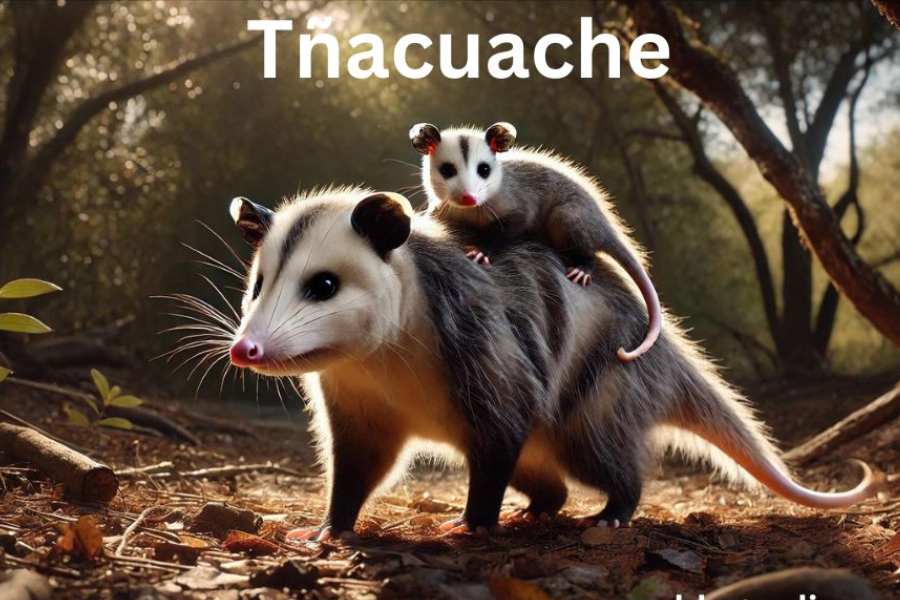The Fascinating World of Tñacuaches: Nature’s Unique Marsupials

Introduction
Have you ever heard of the tñacuache? This intriguing creature, found in various regions of Latin America, captures the imagination with its unique traits and behaviors. In this article, we will dive deep into the world of the tñacuache, exploring its characteristics, habitat, diet, and much more. Whether you are a nature enthusiast, a curious learner, or simply someone interested in wildlife, this guide will enlighten you about these fascinating marsupials.
What is a Tñacuache?
The tñacuache, known scientifically as Didelphis, is a type of opossum. This marsupial is famous for its distinct features and adaptability. Let’s break down some of its key characteristics:
Physical Features
- Pointed Face: The tñacuache has a long, narrow snout that houses sharp teeth. This unique shape helps them grasp their food.
- Prehensile Tail: One of the most remarkable traits of the tñacuache is its long, prehensile tail. This tail acts like an extra limb, helping the tñacuache climb and navigate through trees.
- Pouch: Like other marsupials, female tñacuaches possess a pouch in which they carry and nurture their young.
Fun Facts
- Size: Tñacuaches can range from 8 to 14 inches in body length, with tails that can add another 10 to 16 inches.
- Coloration: Their fur typically appears gray or brown, providing excellent camouflage in their natural habitats.
Habitat and Distribution
Tñacuaches thrive in various environments across Latin America. They inhabit diverse regions, including:
- Forests: Tñacuaches prefer dense forests where they can find ample food and shelter.
- Urban Areas: Surprisingly, these marsupials adapt well to urban settings, often scavenging in backyards and gardens.
- Wetlands: Marshy areas also provide a suitable habitat due to the abundant food sources.
Geographic Range
The geographic distribution of tñacuaches extends throughout Central and South America. Here’s a visual representation of their habitat:(Placeholder for an actual graph)
In addition to these locations, their adaptability allows them to thrive in varying climates, from tropical rainforests to temperate regions.
May You Also Like: Unlock the Secrets of Abby Auto Marketing Cincinnati Today
Diet: What Do Tñacuaches Eat?
Tñacuaches are omnivores, meaning they consume a wide range of food items. Their diverse diet includes:
- Fruits: Tñacuaches love fruits like berries, bananas, and mangoes.
- Insects: They often hunt insects, which provide them with essential proteins.
- Small Animals: Occasionally, tñacuaches may eat small rodents or birds.
Feeding Habits
Tñacuaches use their sharp teeth to tear through tough foods, and their prehensile tail helps them balance while eating in trees. They are nocturnal creatures, which means they are most active at night. During this time, they forage for food, helping maintain a balanced ecosystem by controlling insect populations.
Reproduction and Lifecycle
The reproductive cycle of tñacuaches is fascinating. Here’s how it works:
- Mating Season: Tñacuaches typically breed in the spring.
- Gestation: After mating, the gestation period lasts about two weeks.
- Birth: The young are born tiny and underdeveloped, measuring around the size of a peanut.
- Development in the Pouch: The newborns crawl into the mother’s pouch, where they continue to develop and nurse for about two to three months.
- Independence: Once they leave the pouch, young tñacuaches stay with their mother for several more weeks, learning vital survival skills.
Lifespan
In the wild, tñacuaches can live up to three years, but in captivity, they may reach up to seven years due to better nutrition and protection from predators.
Reproductive Timeline
Here’s a quick visual timeline of the tñacuache’s reproductive cycle:
| Stage | Duration |
|---|---|
| Mating Season | Spring |
| Gestation | ~2 weeks |
| Development in Pouch | 2-3 months |
| Independence | 3-4 months post-birth |
Unique Behaviors
Tñacuaches exhibit several interesting behaviors that make them stand out:
- Playing Dead: When threatened, tñacuaches often play dead as a defense mechanism. They flop over, emit a foul odor, and remain motionless until the danger passes.
- Climbing Skills: Their prehensile tail not only assists in climbing but also helps them grasp branches, making them excellent climbers.
Social Structure
Although typically solitary, tñacuaches may come together during mating season or when mothers raise their young. They communicate through various sounds, including hisses and growls, especially when feeling threatened.
Tñacuaches in Culture
The tñacuache holds significance in various cultures across Latin America. Many communities view these marsupials as symbols of adaptability and resilience. Furthermore, folklore often portrays them as clever and resourceful animals, showcasing their unique characteristics.
Tñacuache in Folktales
In some regions, stories and fables depict the tñacuache as a trickster. These narratives often illustrate moral lessons, emphasizing the importance of wit and intelligence over brute strength.
Historical Context
Tñacuaches have a long history in the ecosystems they inhabit. They play a crucial role in their environment, serving as scavengers that help recycle nutrients back into the ecosystem. Indigenous peoples of Latin America often recognized the tñacuache’s significance, incorporating it into local folklore and traditional practices.
Conservation Status
While tñacuaches are not currently endangered, habitat loss poses a significant threat to their populations. Urbanization and deforestation have diminished their natural habitats, making conservation efforts crucial. Here’s a brief overview of their conservation status:
| Conservation Status | Threats | Conservation Efforts |
|---|---|---|
| Not Endangered | Habitat loss, pollution | Habitat restoration, education |
What Can You Do?
You can contribute to the conservation of tñacuaches and their habitats by:
- Supporting Local Conservation Efforts: Participate in local wildlife conservation initiatives.
- Educating Others: Share your knowledge about tñacuaches and their importance in the ecosystem.
- Promoting Sustainable Practices: Advocate for sustainable practices that protect natural habitats.
Conclusion
The tñacuache, with its unique features and behaviors, truly embodies the diversity of the animal kingdom. From its intriguing reproductive cycle to its adaptive nature, this marsupial continues to capture the interest of researchers and nature lovers alike. By understanding and appreciating these creatures, we can help ensure their survival for generations to come.
If you want to learn more about tñacuaches or support wildlife conservation efforts, explore local organizations or join online communities focused on wildlife preservation. Let’s work together to protect these remarkable marsupials and their habitats!





